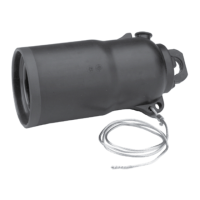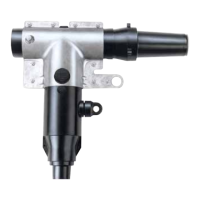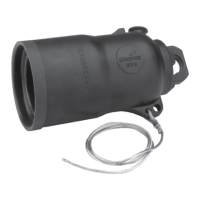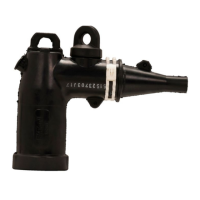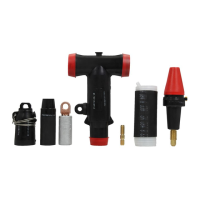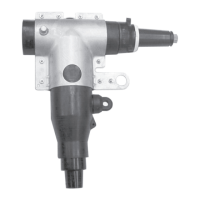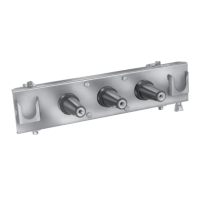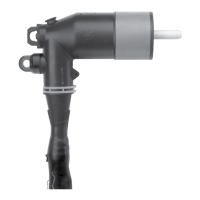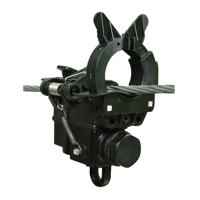Input power to the Form 4D pole-mount recloser control
is connected to terminal block TB1 or AC input receptacle
ifprovided.
DANGER
Hazardous voltage. Do not connect potential
transformer low-voltage secondaries to the control
through cables or other wiring until the unit is installed
in the field. Transformer high-voltage primary windings
will become live when 120/240V AC is applied to the
control from an alternate source if the transformer
secondary is connected. Failure to comply may result in
severe personal injury or death.
T371.2
WARNING
Hazardous voltage. Before applying power to the
control, confirm that male pins of the input power
receptacle are electrically insulated to prevent
unintentional contact with 120/240V AC voltage.
Failure to do so may result in severe personal injury
or death.
T372.1
IMPORTANT
Use a touch-safe DIN rail terminal block tool when
working near terminal blocks. This tool is included with
the control.
See Figures 14, 15, and 16 for single-phase incoming
voltage supply for 120 VAC or 240 VAC.
Refer to Accessory section for 120 VAC or 240 VAC low
voltage closing.
Input power is required:
To power the control.
To provide voltage and power metering.
To power the thermostatically controlled heater.
For the low voltage closing accessory (optional).
For the convenience outlet accessory (optional).
Charge the battery(s).
Battery charger
The battery charger is enabled whenever the Form 4D
control is connected to incoming line power.
An 8 A-hr lead acid battery will fully charge in 24 hours or
less, at 25°C.
A 13 A-hr lead acid battery will fully charge in 39 hours or
less, at 25°C.
The charger includes a temperature-compensated design to
optimally charge the control battery.
Terminal blocks
One terminal block is used for connection to the Form 4D
recloser control. Input power and sensing voltage terminal
blocks will allow a maximum wire size of #12 AWG.
Terminal Block TB1 provides power and sensing voltage to
the Form 4D recloser control modules. Terminal Block TB1 is
used to connect sensing transformer voltage. The wiring of
the transformers should follow the application illustrations
per Figures 14, 15, and 16.
The factory-default wiring from TB1-L1 to TB1-V2+ connects
the metering B phase to the control power supply voltage.
If the incoming power supply voltage is not B phase, move
the phase jumper on TB1 as follows:
For A-phase metering, connect TB1-L1 to TB1-V1+.
For C-phase metering, connect TB1-L1 to TB1-V3+.
ote:N Terminal Block positions TB1-N and TB1-N are factory-
jumpered together.
ote:N Terminal Block positions TB1-L1 and TB1-L1 are
factory-jumpered together.
Power connections
The transformer required for power should be a minimum
of 5 kVA for low-voltage AC closing reclosers and 1 kVA for
high voltage AC closing reclosers and NOVA reclosers.
External voltage sensing
Voltage Sensing inputs are provided for customer
connections to load-side and source-side PTs.
Input voltage range:
0 – 40 VAC (low range).
0 – 305 VAC (high range).
The input range is automatically selected based on V
expected and PT ratio settings:
Low range is selected if V expected/PT Ratio is <= 20.
High range is selected if V expected/PT Ratio > 20.
To avoid erroneous metering values:
Do not exceed the input voltage range.
Set “PT Connection Type” in the ProView NXG software
System Configuration dialog to “None” if external voltage
sensing is not used. This will blank out the voltage
sensereadings.
Set the PT ratio to 1 for all unconnected voltage
senseinputs.
Follow the grounding requirements shown on the Voltage
Sensing wire diagram appropriate for your Wye or Delta
application (Figures 17 or 18).
18 OPERATION INSTRUCTIONS MN280049EN September 2017
Form 4D Microprocessor-based pole-mount recloser control installation and operation instructions

